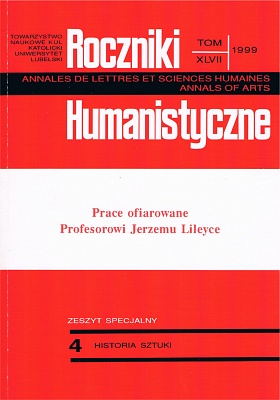Zegary słoneczne Ignacego Manuvira
Abstrakt
In Grodno, Jędrzejów, Cracow, Warsaw, Vilnius and Raubicze near Mińsk there are eight very similar rococo sundials. They were all signed by Ignatius Manuvir who described himself as His Majesty the King's surveyor, the Mińsk province's bailiff, and once even the Grand Duchy of Lithuania's bailiff. His name suggests his foreign origin, but the fact that he held an office – even such a modest one – proves that he was naturalised in Poland. It is not known if Ignatius Manuvir made the sundials as an amateur or if he was a professional, although the latter suggestion might be supported by the number of preserved objects. They were made during a period of fifteen years, between the years 1770 and 1785. Each one is provided with a precise date and a rhymed panegyric addressed to the owner whose name is mentioned; however, on none of them the place where it was made is given. All the sundials were designed for property owners from the eastern territories of the Grand Duchy of Lithuania, from the Mińsk, Witebsk or Połock provinces, so it may be supposed that Ignatius Manuvir lived in those parts, perhaps in Witebsk itself, where during the 18th century also other Manuvirs were recorded.
The artistic merit of the discussed group of sundials is less than modest. The composition scheme is in fact invariably the same, repeating the not very revealing form whose assumption is adjusting to the graphic form of the owner's coat of arms. This conditions the shape of the dial or its contents. Similarly monotonous in their repetitions are the texts of the rhymed panegyrics containing wishes of prosperity in the hours measured by the sundial, more or less ably connected with allusions to the coat of arms and the dignities of the customer. However, this mediocrity paradoxically constitutes significant value of the presented objects. Naive rhymes and awkwardly drawn coats of arms, chronostichons, the layer of “learning” demonstrated by the diagrams accompanying the dial – all these contribute to a picture that is charming in its baroque, pompous, Sarmatian character. It is a significant proof of a deeply rooted, common custom, and at the same time one of its last instances. However, it is worth stressing that this provincial pomp proves to be a concession to the tastes of the customers, and as a horologist Manuvir shows reliable knowledge of astronomy, which is stressed with esteem by experts on the subject.
Copyright (c) 1999 Roczniki Humanistyczne

Utwór dostępny jest na licencji Creative Commons Uznanie autorstwa – Użycie niekomercyjne – Bez utworów zależnych 4.0 Międzynarodowe.





